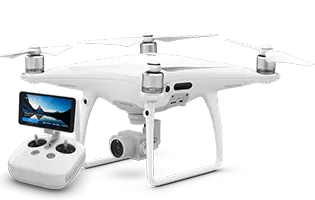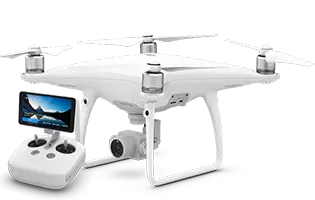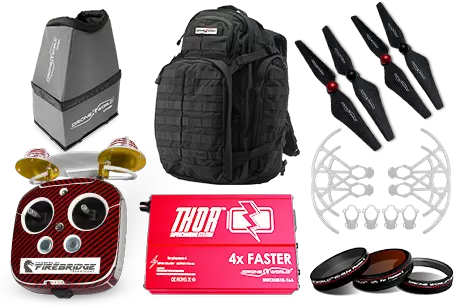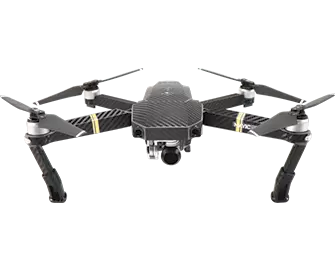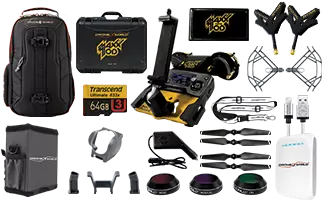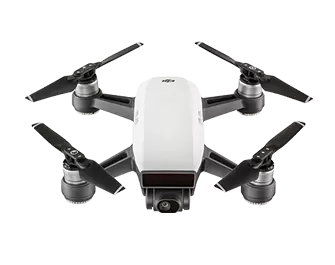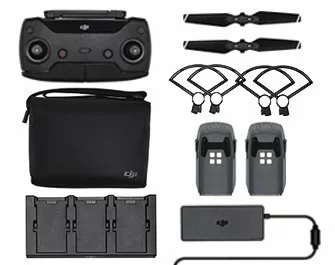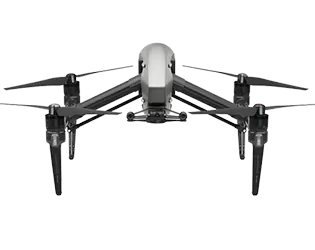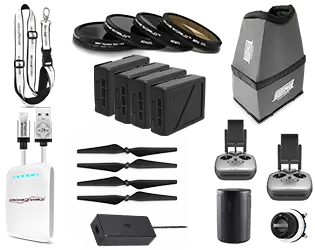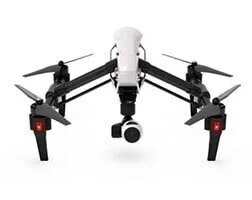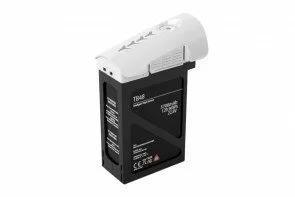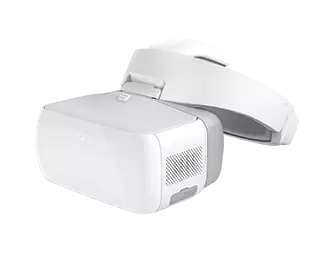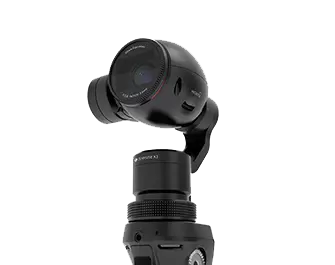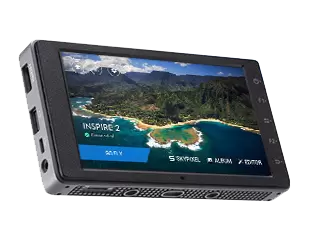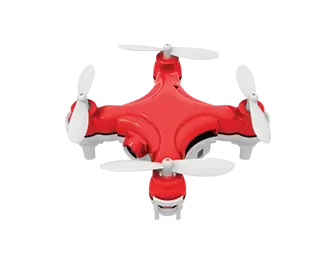DJI Spark Review & Information
The DJI Spark is the newest addition to the DJI drone family, offering customers a brand new way to fly. In this DJI Spark Review, we discuss how this spectacular drone is smaller and lighter than any DJI drone in the company's history, and presents a new avenue of fun for drone pilots to discover. Weighing less than a pound, and utilizing fixed arms, the Spark is crafted to be used by amateur drone pilots, even more so than the other drone DJI fans have come to know and love.
Design
The DJI Spark is the company's smallest drone to date, weighing slightly more than half a pound (0.66 pound). Its width and length are identical (5.6 inches), and it stands 2.2 inches high. The China-based company has been stressing the fact that the Spark weighs less than a can of soda.
Although the Spark is tiny, its arms are not foldable like the Mavic Pro. The propellers fold in for transport and don't have to be removed for storage - making the Spark ready for action at a moment's notice.
It's clear that DJI has opted for a drone that is easy to fly and fun to pilot, decking it out in 5 vibrant color options for consumers: Alpine White, Lava Red, Meadow Green, Sky Blue, and Sunrise Yellow. With facial recognition technology built in, the Spark can be flown without the use of a mobile device or remote controller. This makes for one of the other purely fun elements of this aircraft, as Spark pilots can be seen controlling their aircraft with their hands:
Though the Spark is small, it boasts the best flight time in its class, flying for 16 minutes while most of its competition hovers around 10 minutes. Plus, with a micro USB port, charging Spark with a portable batter pack or laptop is a cinch. All the details about the Spark are in one place on our Specs Page. For just $49 extra you can purchase an extra battery, and extend your flight times in the field.
Transmission Distance + Performance
No DJI Spark Review is complete without delving into the details of this drones's abilities in the air. Using the controller, the DJI Spark can fly up to 1.2 miles away, but Spark owners can also fly with their mobile device or via gesture controls (see below). Spark pilots can fly their drone 109 yards away and 54 yards high with their mobile device.
In terms of top speed, the Spark is capable of a solid 31 mph, fliyng for 16 minutes on a single charge. This is impressive given its small size.
Camera
One of the most exiting aspects of the Spark is the onboard camera and 2-axis gimbal. Sporting a 1/2.3" CMOS image sensor, the Spark camera record FHD video at 1920x1080 resolution and 12 MP pictures. Like the Mavic, the Spark uses an electronic shutter, with a speed of 2-1/8000s. For taking photographs, there are two special modes to try: Shallow Depth of Field and Panorama. Shallow depth of field will lock onto a subject and fly two feet straight up, combining several images into a 1.6MP JPG, creating a neat effect where the background is blurred and the subject remains in focus. Panorama is best for sweeping vistas to really capture the grandiosity of your surroundings. THe Spark will fly sideways or vertically and stitch together images to create a wide panoramic shot. (Important note: these special shots only save to the Spark memory card, not the DJI Go App, which means you cannot view them right away, unfortunately)
Also of note are the brand new shooting modes:
|
|
|
|
|
|
|
Flying with these modes is not only super easy, but a lot of fun, and it provides beginner pilots with a sort of jumping off point. They can try out each mode and become inspired for shooting video in other ways, whether they are soaring over a beach, flying through a thick forest, or simply getting great aerial footage of their local neighborhood. While many Spark fans are gushing about the small size and the gesture controls, these creative shooting modes are great additions to the drone and should not be overlooked.
Gesture Controls
One of the most striking new features that has to be mentioned in our DJI Spark Review, are the new gesture controls introduced by DJI. With the use of facial recognition technology, Spark owners can get their aircraft up in the air and moving about without the use of a dedicated remote controller or mobile device. Watching this in action is pure bliss, as the pilot can control their drone with a simple wave of their hand. The Spark can be moved up, down, left, and right, as well as forward and backward. Plus, instructing it to take a selfie, return home, or engage in the ActiveTrack flight mode can all be accomplished with simplified gestures. Simply wave one hand to begin Active Track, a camera motion to snap a photo, and wave two hands to beckon the Spark back to you for a soft landing in the palm of your hand.
Flying with the gesture controls is a ton of fun, but we suggest you take caution when flying without a controller. Be aware of your surroundings, and if you are flying with the app, be sure that you keep the Spark within a comfortable range so that it does not lose signal.
Sensors
Whether you are a first-time flier or a seasoned pro, flying with obstacle sensing engaged is always a great way to protect against accidents. The Spark comes equipped with obstacle sensing while travelling at speeds up to 6.7 mph. Anything in front of it between 1-16 feet will activate the brakes and disallow you from flying any farther. Obstacle sensing is an incredibly useful feature of the Spark, perfect for first time flyers. New pilots can rest assured that their Spark will be safe from accidental collision in front of the drone. It's important to note, however, that the Spark has no obstacle sensing on the sides, meaning that crashes can still happen even with obstacle sensing activated.
Who's it For?
Perhaps the most talked about aspect regarding the DJI Spark surrounds who it's target market is. Based on the marketing campaign from DJI and the functions of the drone itself, it is clear that they are selling the Spark to any and all who are interested. The Spark is a drone that any beginner pilot can pick up and fly, taking to the skies worry-free. The candy color spectrum reinforces this fun feeling, as do the blissful and eye-catching gesture controls. At 16 minutes of flight time, we can understand why more experienced drone pilots might overlook the Spark. In many ways, the Mavic Pro gives you more bang for your buck, including better video, a higher quality 3-axis gimbal, and longer flight time.
If you enjoyed reading our DJI Spark Review, head over to our Spark page to buy this drone and the peruse the various DJI accessories for it.
.

